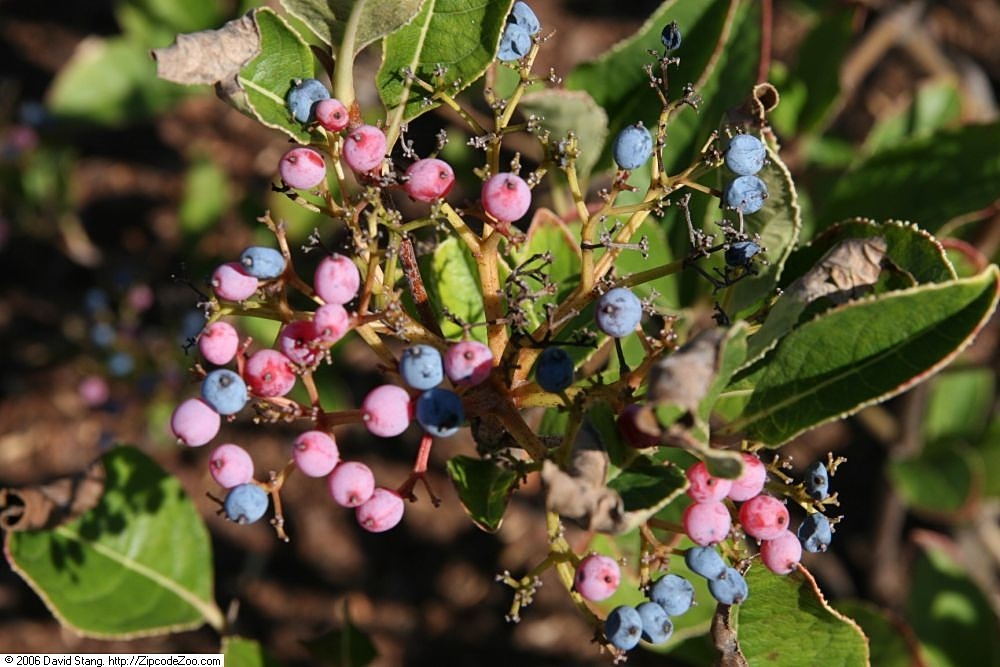Perennial deciduous Wild Raisin are generally multi- stemmed bushes that can grow to 6 ft tall by 6 ft wide, though they’re often smaller. The Honeysuckle Family known as Caprifoliaceae is the shrub’s classification.Some leaves are serrated but this plant is distinguished from other unlobed viburnumsby for lacking star-shaped hairs on underside of leaf and having leaf veins, which branch and reform before reaching the margins. It produces showy white flower cluster and the fruit is a drupe with an elliptic stone and sweet pulp, blue-black, 6 to 12 mm. The Bark is grey or brown and covered with small white spots. While in the autumn, the leaves turn rosy-orange. The plants thrive in wet shady areas as an understory shrub, and it’s a common food for wild birds. The berries are also edible for humans, and with plants bearing heavy annual crops, Wild Raisin is a good choice for permaculture plantings in shady areas beneath larger trees. The wood is of no commercial importance. Viburnum cassinoide, Viburnum nudum, Appalachian Tea, Raisinberry, Possumhaw, Witherod, and Raisinberry are other names.






